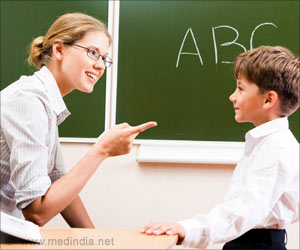Companies market a huge array of interactive educational apps for kids, but are they effective and can they teach real-world skills?

Guidelines published by some government bodies suggest that while children can learn skills from screen-based media, such as videos or touchscreens, they can struggle to apply these skills elsewhere. This conventional thinking is backed by the majority of previous research.
However, some studies have shown that children can in fact translate screen-based learning to real-world skills. These contradictory findings have inspired researchers to further explore this phenomenon. One such researcher is Joanne Tarasuik, of the Swinburne University of Technology in Australia.
In a previous study, Tarasuik and colleagues found that children in Australia could learn how to solve a puzzle on a touchscreen device, and then successfully transfer these skills to completing the same puzzle in the physical world.
As this is contradictory to most previous research, the team repeated the study in different children, with a different language and culture, to make sure that the findings were correct and robust.
In this new replication study, recently published in open-access journal Frontiers in Psychology, the Australian team collaborated with researchers in Croatia to repeat their original study with Croatian children.
Advertisement
The children practiced the puzzle on a touchscreen app, or with a physical version using wooden pegs and discs, and the researchers measured how many moves they took to complete it, and how long they spent.
Advertisement
The children all needed a similar number of moves to complete the wooden puzzle, regardless of whether they had practiced using the virtual puzzle, the physical puzzle, or a combination of the two. From the first to final attempt at the puzzle, all the children also improved their speed.
"We successfully replicated our previous findings that 4-6 year old children can apply knowledge of this puzzle from practice using a touchscreen device, to the physical version of the puzzle," says Tarasuik.
The researchers hypothesize that unlike some passive forms of screen learning like a simple video demonstration, the interactive virtual puzzle significantly engaged the children and enhanced their learning, so that they could successfully apply those same skills to the wooden puzzle.
The findings contrast with most previous research in this area, and suggest that different screen learning media, such as video presentations or interactive apps, could have different effects on whether children can transfer learned skills to the physical world.
"These results demonstrate that 'screen time' is not a useful umbrella phrase, as what children can obtain from different types of screen media will vary, and numerous factors can impact their learning outcomes," says Tarasuik.
"We would like these results to guide future research into how and what children of different developmental stages can learn via touch screen technology, and then apply in the physical world."
Source-Eurekalert









